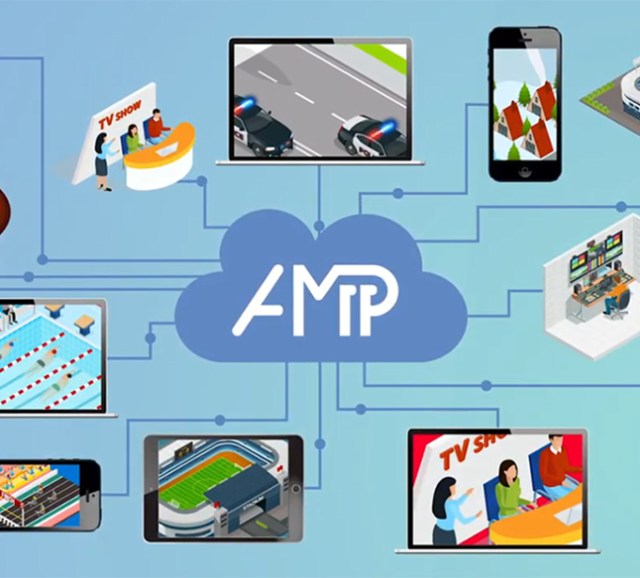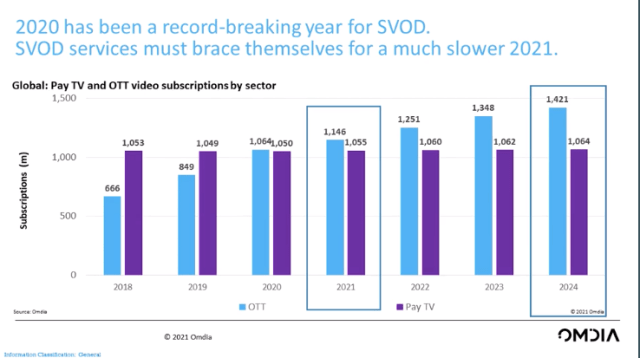The media ecosystem has experienced almost unimaginable change since March 2020. For some perspectives on the journey, and a look into the future, Grass Valley and a panel of experts from different disciplines sat down to tease out the issues in “GV Live Presents – Inform 2021.”
What did the industry experience in 2020? What can we expect in 2021? In 2020 remote production really came into play when many broadcasters and production companies found themselves with staff dispersed around the world, unable to use typically familiar production tools to do their jobs.
On the panel to discuss these issues were Darren Lepke, Head of Video Product Management, Verizon Media Services; Chuck Meyer, Technology Fellow, Grass Valley; Maria Rua Aguete, Research Director, Omdia/Informa; and Joe Zaller, Founder & President of Devoncroft Partners. Together with Grass Valley Marketing Communications Vice President David Cohen they looked at the impact of COVID-19 in the media technology space; the dramatic rise of remote production; streaming and subscription video trends in 2020; moving workflows into the cloud with virtualized equipment; and moving from on-prem software to the cloud.

Chuck Meyer said, “The entire industry was in managed chaos mode. Whatever you could do to get something on the air, to recover from the social distancing requirements of COVID, that’s what you did.
“And I think that’s why a lot of our work in remote production had held us in good stead to be responsive. We had been looking at virtualization for remote production, and to a large degree COVID accelerated our customers’ willingness to adopt that technology in an effort to get content to air.

“So we’ve even seen the technology move out of what we would call ‘remote’ and into areas we would consider mainline production. And I think it’s an acceleration effect, that as technology matures we’re going to see it be more enshrined compared to traditional ways, or perhaps as an augmentation to traditional ways. It’s both a huge challenge and an exciting opportunity,” said Meyer.
Verizon Media Business operates largely on the distribution side, serving viewers who consume content via platforms enabled by the company. What was the impact beyond production, and how has COVID impacted customers of Verizon Media Services?
“We see day in and day out what the internet is doing: across the board consumption is up across web sites, streaming and applications,” said Lepke. “People are stuck at home, and consuming more content.
“We see cloud as salvation. Long term it’s cloud, IP, increased connectivity, edge processing, 5G, all of these things. Gravity is on the side of that technology.”
— Joe Zaller, Devoncroft Partners
“Specifically in the OTT video space at the outset of the pandemic, we saw a couple of interesting patterns. First, not surprisingly, was the decline in sports viewing as many of the leagues cancelled their seasons and re-worked their protocols in terms of player safety and then eventually relaunched in July.
“It’s also no surprise that news consumption went through the roof during the early days of the pandemic, along with premium content offerings whether subscription-based or advertising-based. As of today we’re returning to pre-pandemic levels for sports, and trending overall 20-30% above what we would expect to see from our models. So in general this pandemic has driven a great deal of consumption of content and we really don’t see that slowing down,” said Lepke.

From an Omdia/Informa research perspective Maria Rua Aguete said, “in terms of pay video streaming, 2020 was the best year in history. They had more than 220 million net additional subscribers in 2020 — Netflix, Amazon, Disney, Apple TV+ and many others. And for the first time in history in 2020, online subscriptions overtook Pay TV subscriptions.
“Not a surprise of course that the growth was so huge, especially when services like Disney launched at a time when kids were stuck at home and unable to go out. Saying this, it’s very important to mention that because of this huge growth in 2020, we’re expecting that the growth in 2021 will not be so big. If we’re talking about growth of 200 million subscribers in 2020, we’re expecting around half of that this year — maybe 100 million,” she said.
“Who will be the winners and losers? In 2021, a lot of those new subscribers will be lost, because once their free trial period is over we will see high churn. This churn will be seen right across paid video streaming services, and a high-growth boom for AVOD [Advertising-driven Video on Demand],” said Rua Aguete.
Is Cloud-Based Live Remote Production Ready for Primetime?
Part of enabling remote production is moving workflows into the cloud so that teams can work virtually and equipment can be virtualized — making production and delivery of media more efficient. Where is the impact of cloud-based workflows greatest? Is it in production?
“When the base technologies become common, then where I do my production is really a function of the economy,” said Meyer. “Do I do it in the cloud or on the ground?
“Any workflow is essentially similar: we capture video or we bring it off a disc, we process it, assemble and distribute. What we’re going to see is that, in certain aspects, if it is financially correct we’ll do it in the cloud and if not we’ll keep it on the ground in a traditional workflow for other reasons. Eventually it will be the way: where a customer puts it will be based on their economic and privacy models.”
“I think ‘eventually’ is the key word there, Chuck. It [cloud] is not ready for primetime now,” said Zaller. “What All Mobile Video is doing with their cloud control room is really interesting, where they use KVM to control equipment that’s at the site and they can do that remotely.

“But in terms of live production in the cloud? Not happening this year. It [cloud] is already pervasive in content prep and manipulation for linear playout and aspects for OTT production and playout, but it’s just not economical now for full-bandwidth live production,” said Zaller.
“My observation on that Joe is that when people ask me can they put a production switcher in the cloud, my answer is ‘how big’? So to your point, no, can’t do the Super Bowl, but it’s horses for courses,” Meyer replied.
“Sure you can mix stuff in the cloud and do it very expensively,” said Zaller, “or you can do something low budget like a high school sports match. Either one is based on the economics of the production. But it’s too expensive to do full live production in the cloud right now.”
“On the OTT side it’s been all cloud all the time from Day One,” said Lepke. “Yes there are some contribution and distribution first-mile and last-mile issues bottlenecks that we’re working through. But ultimately we feel the cloud is the future; it’s coming sooner rather than later; and I don’t think it’s just for high school sports games.
“During the pandemic, for instance, Verizon worked with a charity called Pay It Forward, where we brought in famous recording artists to do a one-hour in-home concerts for live broadcast, while donations were solicited for the charity.
“In any given world where you have Alicia Keys or a major country music star doing a live concert you would roll a satellite truck to their house, implement dual redundant paths and do a great deal of on-prem infrastructure in place.”
— Darren Lepke, Verizon
“In any given world where you have Alicia Keys or a major country music star doing a live concert you would roll a satellite truck to their house, implement dual redundant paths and do a great deal of on-prem infrastructure in place. For these concerts, specifically, it was entirely cloud-based. We had 5G connectivity in these folks’ homes and all-cloud production with the directors being 100% remote and then the content itself being distributed across the public internet,” he said.
“So I think a couple of key trends are coming together that will really push cloud-adoption faster than we think. Number one: 5G connectivity is getting better. 5G is going to solve a lot of issues around how you get content out of venues.
“And number two, the bigger trend we’re seeing in media companies is the convergence of traditional broadcast groups and digital groups. Beforehand, they used to be very separate silos with separate P&Ls, and today that’s coming together where there is a content group and a distribution group. And as such, I think we’ll see a lot of the digital workflows start to flow back into the realm of traditional broadcasters and really push that migration to the cloud.”
Key Technologies that will Drive the Industry into the Future
The industry had been moving to remote production in advance of the COVID pandemic, and many content owners were well prepared. What is the industry’s level of preparedness to ramp up remote production capabilities, asked Cohen, as many are saying this is not a temporary move so that remote is here to stay?
“We see cloud as salvation,” said Zaller. “Long term it’s cloud, IP, increased connectivity, edge processing, 5G, all of these things. Gravity is on the side of that technology. And the specialized solutions providers who are willing to invest organically — alongside the vision of their customer in an area where they operate — will be the ones that are successful.

“The COVID-driven acceleration is real. We have accelerated into something new. A lot of the customers will probably end up skinnying down because they are able to do more with less: they have just proved for the last 12 months that they can,” he said.
“Budgets will be different and travel will certainly be different. I think the way suppliers spend their sales and marketing money is going to change. Whether or not the broadcasters and producers are going to be able to travel in the same way in 2021 is still questionable. That’s a little bit unknown, but from a technology perspective things are actually clearer than they were a year ago.
“There was a big slowdown and then a massive acceleration with lots and lots of media companies moving into cloud, remote production, OTT, and direct to consumer. It begs questions of ad tech, of data and of direct relationships between media companies and their customers — and we just see that accelerating through 2021 and into 2022,” said Zaller.


